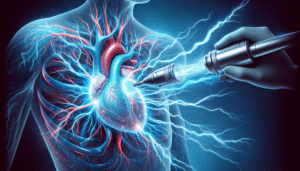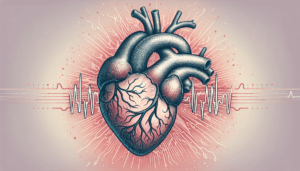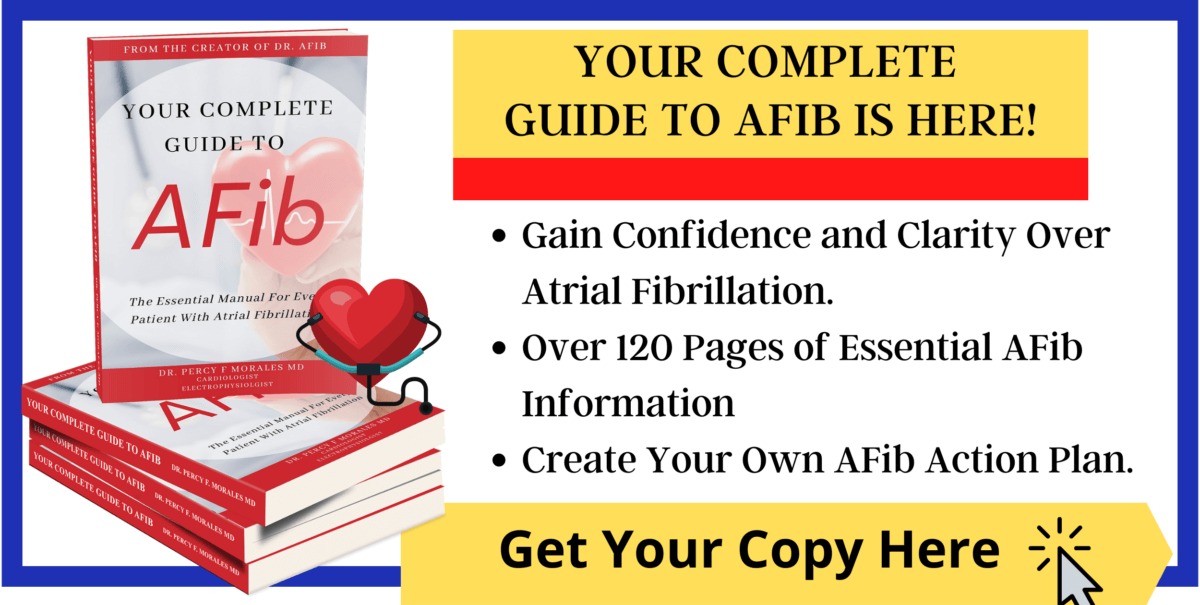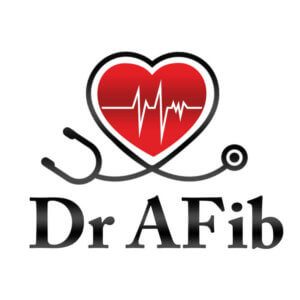Learn how to stop AFib at home. For anyone newly diagnosed with atrial fibrillation, having even a mild AFib attack at home can be a very frightening and stressful event. With your heart racing and your breathing pattern all over the place, the last thing you want to do is end up at the emergency room again — but do you really have a choice?
As an electrophysiologist, I am here to tell you that you do! There are many different ways that people can manage their atrial fibrillation at home — including these must-know tips that I share with all of my patients.
With this in mind, here are 10 of my top tips for controlling a mild AFib attack in the comfort of your own home:
How To Stop AFib: 10 Tips For Stopping an AFib at Home
#1 — Practicing Vasovagal Maneuvers
During the onset of an AFib attack, it can often feel like your heart is beating out of your chest. Hence, finding ways to slow your heart rate at home can be incredibly helpful for those with the disease. The vagus nerve (which is the primary nerve of the parasympathetic nervous system) is responsible for controlling body functions like our digestion, immune system, and heart rate — and activating this nerve can help to slow your heart rate during an AFib attack.
Because the vagus nerve run along the side of the neck into the chest cavity, there are a few at-home options available for AFib patients to try to slow their heart rate:
A popular option for controlling your heart rate during an AFib attack is practicing vasovagal maneuvers. A popular choice for activating your vagus nerve, this technique relies on pressure and contraction from your core muscles to trigger a response from your parasympathetic nervous system. To try this technique, I advise that my patients take a deep breath and bear down as if they are using the washroom. Try to hold it for several seconds if possible. It should keep you pushing downwards, using your abdominal muscles to compress inwards, which can slow your heart rate down.
#2 — Immersing Your Face in Cold Water
Another option for engaging the vagus nerves, cold water therapy can successfully trigger your parasympathetic nervous system. Sometimes referred to as a divers reflex, submerging your face and neck in cold water can cause muscle contractions that stimulate the vagus nerve, helping to slow the heart rate during an AFib attack. Other options for cooling your face to get the same results include placing a bag of ice on your face for fifteen seconds or taking a very cold shower. The water or ice needs to be very cold to active the vagus nerve.
#3 — Holding Your Breath and Popping Your Ears
Another option I recommend is holding your breath and attempting to pop air out of your ears. To achieve this, simply pinch your nose and close your mouth, then try to lightly push air out of your ears for a few seconds. This pressure can help to activate your vagus nerves, helping to slow your heart rate and stop an AFib attack.
Your Complete Guide To AFib: The Essential Manual For Every Patient With Atrial Fibrillation
#4 — Carotid Artery Massage
If none of the above options are working for triggering your vagus nerves, a carotid artery massage can help to trigger a parasympathetic nerve response and slow your heart rate down. Often only performed by medical professionals, this technique involves applying moderate pressure to the carotid sinus — a bundle of nerve endings in the neck surrounding the carotid artery. Due to the more risky nature of this procedure, I strongly encourage my patients to only perform this technique if they are not alone and only if they have received adequate training from their medical provider. There are carotid sinus and nerves on both sides of the neck, so a massage can be applied to both sides, but never at the same time. Moderate pressure should be applied to the carotid body area in a circular massage for usually 5-10 seconds. There are several websites that give more detailed explanations on how to do a carotid massage.
#5 — Deep Breathing Exercises
If you have ever experienced an AFib attack, you likely have noticed that the episode is commonly associated with a change in your breathing pattern as well. In the human body, our breath is deeply connected to the function and health of our heart — meaning that during periods of cardiac distress, it is common for your breathing rate to also change. In a common breathing method used to help during an AFib attack (called a pranayama for those who do yoga), you hold your breath for several seconds and then exhale slowly. The goal is to exhale for longer than it took to inhale your breath. With practice, you can continue to make the exhale slower and slower, increasing your ability to slow and calm your heart rate.
#6 — Mindful Meditation
Adding another layer to deep breathing exercises, choosing to participate in a session of mindful meditation during an AFib attack can help to reduce stress and slow your heart rate. As a mind-body activity designed to help ground the participant in the moment, taking a few moments to close your eyes, breathe deeply, and clear your mind can help to make your AFib symptoms less severe.
#7 — Yoga
Outside of structured breathing and meditation, choosing to participate in yoga practice can also relax your heart and slow your heart rate — both of which are helpful during an AFib attack. As a relaxing flow-based exercise, stretching and moving through yoga poses can be very relaxing for the core body muscles and the heart. In most cases, your yoga instructor will instruct you to time your breathing with your movement, which is an activity that can help to allow you to regain control over your breath and heart rate during a mild AFib attack at home. Examples of relaxing yoga poses that I recommend during an AFib attack include cat posture or child’s pose — whichever you find more comfortable.
#8 — Exercise
Despite being seemingly counterintuitive, many of my patients have reported that participating in aerobic exercise has helped them get out of an episode of AFib. Depending on the severity of your symptoms and your other medical comorbidities, some of my patients have reported that quickly walking up and down a flight of stairs repeatedly, or riding a stationary bike has helped them to return their heart rate to a more regular rhythm. But, just because this option works for some people doesn’t mean it will work for you. Because of this, I recommend you speak with your physician to see if this method can be safe option for your unique health situation.
#9 — Taking Additional Medications
In some cases, taking an extra dose of your currently prescribed AFib medication can help to stop an active AFib attack. Medications that can be the most effective for stopping an AFib attack include beta blockers and anti-arrhythmics. But, it is important to note that this technique should only be done with the permission and guidance of your doctor. Additionally, I highly recommend having a blood pressure monitor at home if you choose to try this option during an episode of AFib. It is especially important to monitor your blood pressure and heart rate at home if you are taking extra medications during an AFib attack.
#10 — The Pill In The Pocket Technique
Finally, another pharmacological option that has proven successful is using the “pill in the pocket” technique using the anti-arrhythmic drug, Flecainide. As a medication that interacts with the sodium channels in the heart, taking higher doses (usually 200 -300 mg) of Flecainide during an AFib attack can help to slow down a racing heart rate. For patients with paroxysmal AFib (where symptoms come and go seemingly at random), taking Flecainide only as needed during an episode can be a therapeutic option for reducing symptoms. To learn more about Flecainide and to see if it is a good fit for your needs, I recommend speaking with your cardiologist or electrophysiologist.
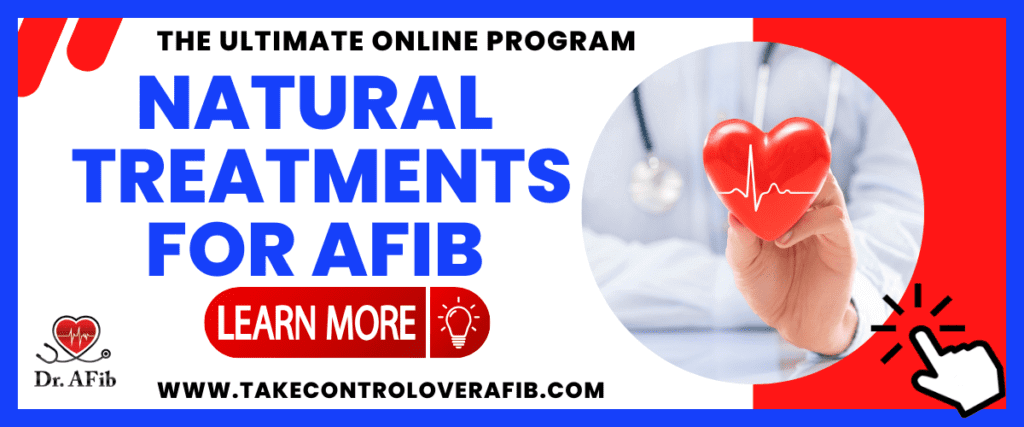
Know When To Go to The Emergency Room During an AFib Attack
As helpful as these tips can be, they are not a substitute for high-quality medical attention in the case of a medical emergency. Unfortunately, because everyone experiences AFib in their own unique way, there is no universal advice for when you need to go to the emergency room during an AFib attack. But, this being said, there are certain situations or severe AFib symptoms that more often than not, will require emergency room treatment, such as:
-
You experience profound chest pain
-
You become short of breath, feel dizzy, or are light-headed
-
You feel out of control or stressed
-
Any attempts to control your AFib symptoms have been unsuccessful
At the end of the day, it is better to get the medical care that you need rather than wait to see if your symptoms resolve. In addition, intravenous medications given in the emergency room will usually improve symptoms fairly quickly. So, give these techniques a try to see if they help — but if they don’t resolve your symptoms quickly, seek emergency medical attention as soon as possible. Read more about when to go to the emergency room during an AFib attack here.
How to Stop AFib: Can You Stop Atrial Fibrillation Naturally?
If you are interested in natural treatment options for atrial fibrillation and are highly motivated in improving your symptoms naturally, to reduce your need for medications or even procedures, then take a look at my one-of-a-kind, online educational program, Take Control Over AFib.
Lifestyle modifications and reducing inflammation are essential components of the long-term management of atrial fibrillation. Addressing the source cause of atrial fibrillation can lead to a significant benefit for most AFib patients. Targeted lifestyle modifications can reduce your symptoms, reduce your reliance on medications or procedures, and even improve the long-term success rate of a catheter ablation procedure for AFib. However, most patients are not given instructions or tips on how to accomplish these essential lifestyle modifications in an AFib targeted style.
This is exactly why I created the Take Control Over AFib Program, to give people a step-by-step plan to improve and potentially reverse atrial fibrillation naturally.
Thinking about lifestyle modifications is easy, but putting in place a system to keep you committed to achieve real results takes time and dedication, and with my step-by-step plan, we can achieve powerful and long-lasting results together.
Learn More About The Take Control Over AFib Program Here
Learn more about the Take Control Over AFib Program here.
The Best Atrial Fibrillation Book
Your Complete Guide To AFib: The Essential Manual For Every Patient With Atrial Fibrillation

Shop AFib Products on Amazon
KardiaMobile 6-Lead Personal EKG Monitor – Six Views of The Heart – Detects AFib and Irregular Arrhythmias – Instant Results in 30 Seconds – Works with Most Smartphones - FSA/HSA Eligible
13% Off
KardiaMobile 1-Lead Personal EKG Monitor – Record EKGs at Home – Detects AFib and Irregular Arrhythmias – Instant Results in 30 Seconds – Easy to Use – Works with Most Smartphones - FSA/HSA Eligible
$79.00 (as of June 17, 2025 15:15 GMT -06:00 - More infoProduct prices and availability are accurate as of the date/time indicated and are subject to change. Any price and availability information displayed on [relevant Amazon Site(s), as applicable] at the time of purchase will apply to the purchase of this product.)
Apple Watch Series 9 [GPS 41mm] Smartwatch with Storm Blue Aluminum Case with Silver Sport Band M/L. Fitness Tracker, Blood Oxygen & ECG Apps, Always-On Retina Display
(as of June 17, 2025 08:55 GMT -06:00 - More infoProduct prices and availability are accurate as of the date/time indicated and are subject to change. Any price and availability information displayed on [relevant Amazon Site(s), as applicable] at the time of purchase will apply to the purchase of this product.)
Fitbit Sense 2 Advanced Health and Fitness Smartwatch with Tools to Manage Stress and Sleep, ECG App, SpO2, 24/7 Heart Rate and GPS, Shadow Grey/Graphite, One Size (S & L Bands Included)
10% Off
OMRON 2-in-1 Upper Arm Blood Pressure Monitor & 1-Lead EKG Monitor - Clinically Validated Blood Pressure Arm Cuff & Machine - Use OMRON Connect App
24% Off
Samsung Galaxy Watch 6 44mm Bluetooth Smartwatch, Fitness Tracker, Personalized HR Zones, Advanced Sleep Coaching, Heart Monitor, BIA Sensor, Health Wellness Insights, Big Screen, US Version, Graphite
$353.21 (as of June 17, 2025 20:45 GMT -06:00 - More infoProduct prices and availability are accurate as of the date/time indicated and are subject to change. Any price and availability information displayed on [relevant Amazon Site(s), as applicable] at the time of purchase will apply to the purchase of this product.)
Natural Rhythm Triple Calm Magnesium 150 mg - 120 Capsules – Magnesium Complex Compound Supplement with Magnesium Glycinate, Malate, and Taurate. Calming Blend for Promoting Rest and Relaxation.
$20.77 ($0.17 / Count) (as of June 17, 2025 18:04 GMT -06:00 - More infoProduct prices and availability are accurate as of the date/time indicated and are subject to change. Any price and availability information displayed on [relevant Amazon Site(s), as applicable] at the time of purchase will apply to the purchase of this product.)
Pure Encapsulations Magnesium (Glycinate) - Supplement to Support Stress Relief, Sleep, Heart Health, Nerves, Muscles, and Metabolism* - with Magnesium Glycinate - 180 Capsules
$44.60 ($0.25 / Count) (as of June 17, 2025 08:55 GMT -06:00 - More infoProduct prices and availability are accurate as of the date/time indicated and are subject to change. Any price and availability information displayed on [relevant Amazon Site(s), as applicable] at the time of purchase will apply to the purchase of this product.)
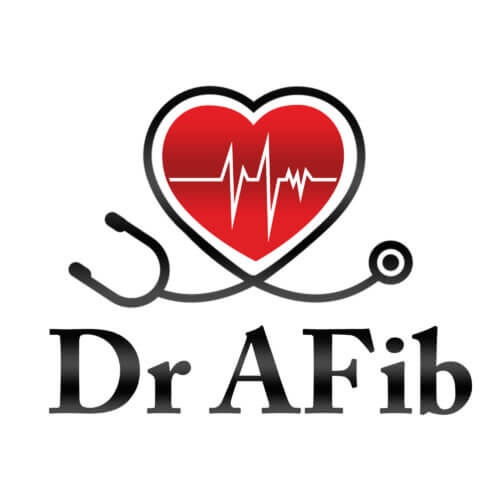















![Apple Watch Series 9 [GPS 41mm] Smartwatch with Storm Blue Aluminum Case with Silver Sport Band M/L. Fitness Tracker, Blood Oxygen & ECG Apps, Always-On Retina Display #1](https://m.media-amazon.com/images/I/311xwtp4mFL._SL100_.jpg)
![Apple Watch Series 9 [GPS 41mm] Smartwatch with Storm Blue Aluminum Case with Silver Sport Band M/L. Fitness Tracker, Blood Oxygen & ECG Apps, Always-On Retina Display #2](https://m.media-amazon.com/images/I/41j+8AaUGsL._SL100_.jpg)
![Apple Watch Series 9 [GPS 41mm] Smartwatch with Storm Blue Aluminum Case with Silver Sport Band M/L. Fitness Tracker, Blood Oxygen & ECG Apps, Always-On Retina Display #3](https://m.media-amazon.com/images/I/41jIyxZitnL._SL100_.jpg)
![Apple Watch Series 9 [GPS 41mm] Smartwatch with Storm Blue Aluminum Case with Silver Sport Band M/L. Fitness Tracker, Blood Oxygen & ECG Apps, Always-On Retina Display #4](https://m.media-amazon.com/images/I/41IpNJERjCL._SL100_.jpg)
![Apple Watch Series 9 [GPS 41mm] Smartwatch with Storm Blue Aluminum Case with Silver Sport Band M/L. Fitness Tracker, Blood Oxygen & ECG Apps, Always-On Retina Display #5](https://m.media-amazon.com/images/I/31o17yhfYpL._SL100_.jpg)
































